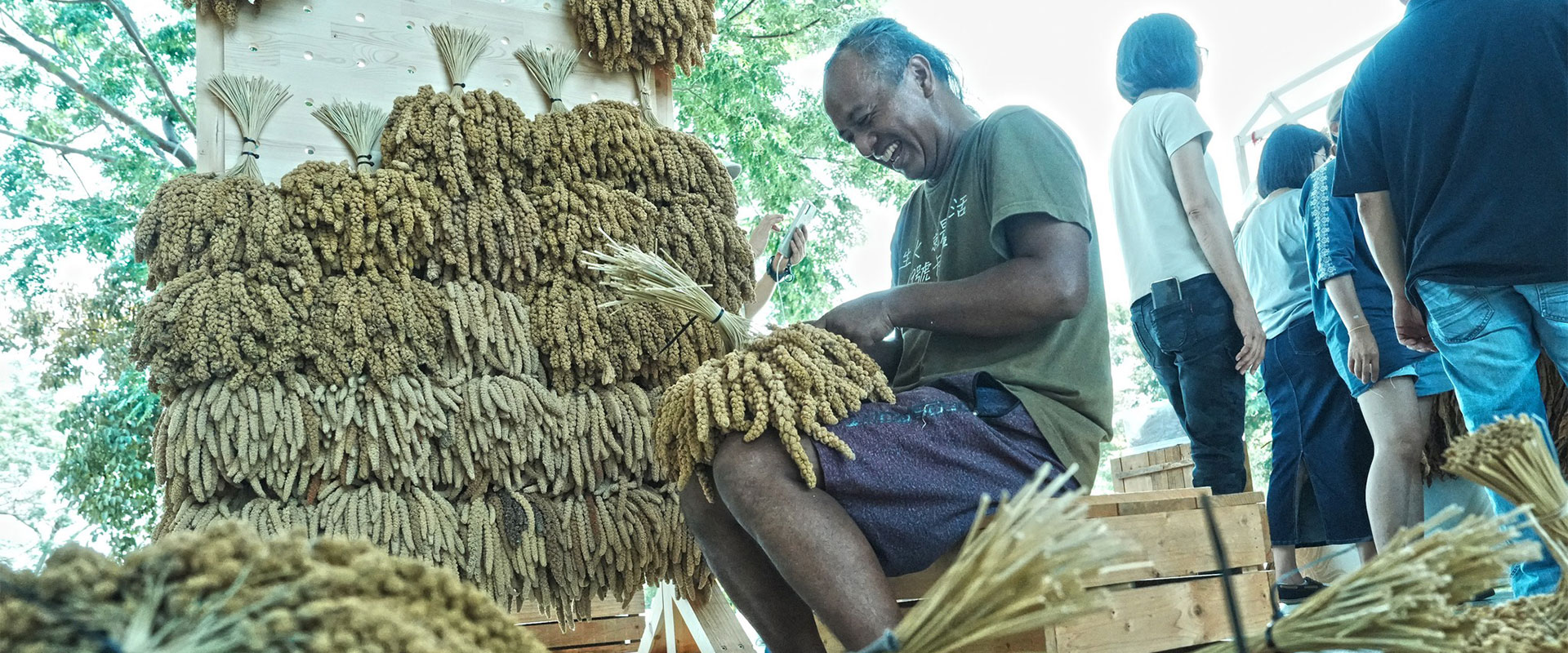
Walking into the Forest
Walking into the Forest Calendar
This story begins with the falling fruits of the soapberry tree...
“amin nga vaqu a tja kudakudain.”
—“Our lives move in rhythm with millet.”
Talem, Da-zhu-gao River Basin.
Here, the rhythm of farming is read through the language of the forest:
Which tree has begun to drop its fruits? Which flower is blooming?
The people follow these signs from the plants, guiding when to clear the land, sow seeds, thin the seedlings, harvest...
Every season flows in sync with the breath of the forest.
Just like the 24 solar terms familiar to Han Chinese,
this is the Millet Life Calendar unique to the Tutsak community—
a forest calendar finely tuned to the local landscape.
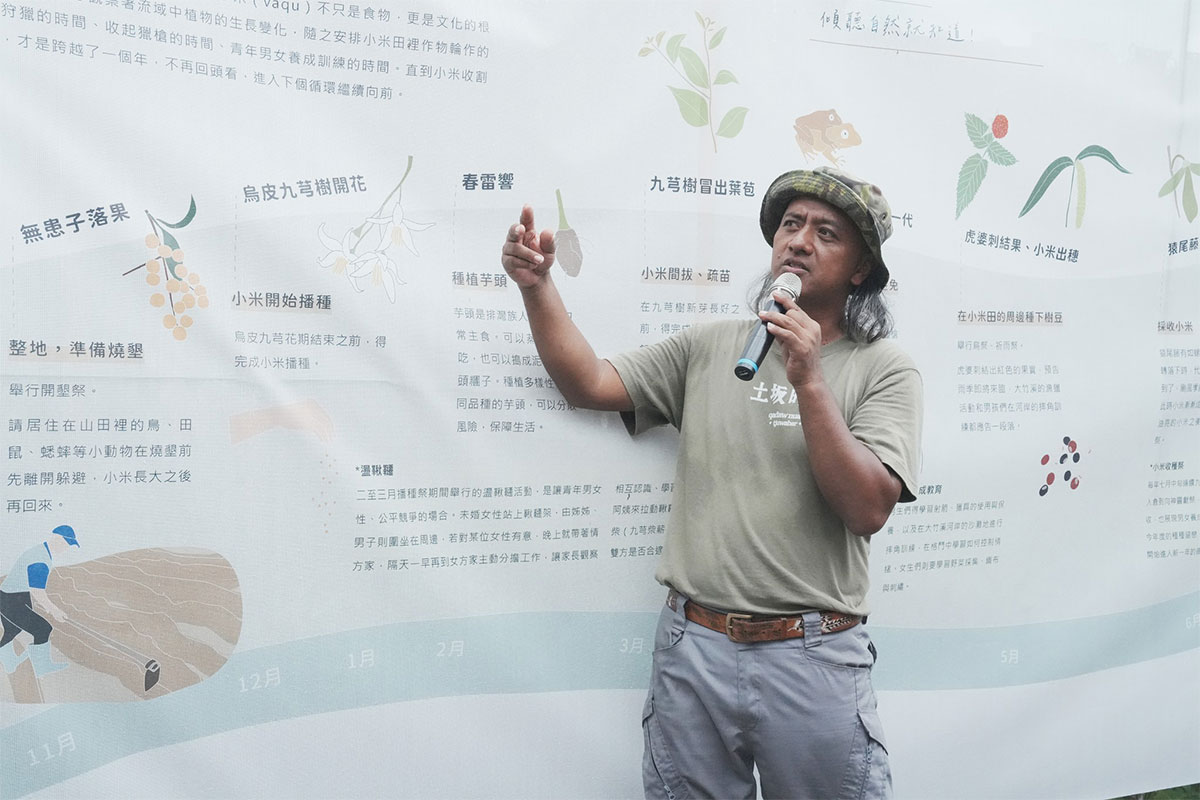 Farmer Lan Bao Explains the Forest Calendar.
Farmer Lan Bao Explains the Forest Calendar.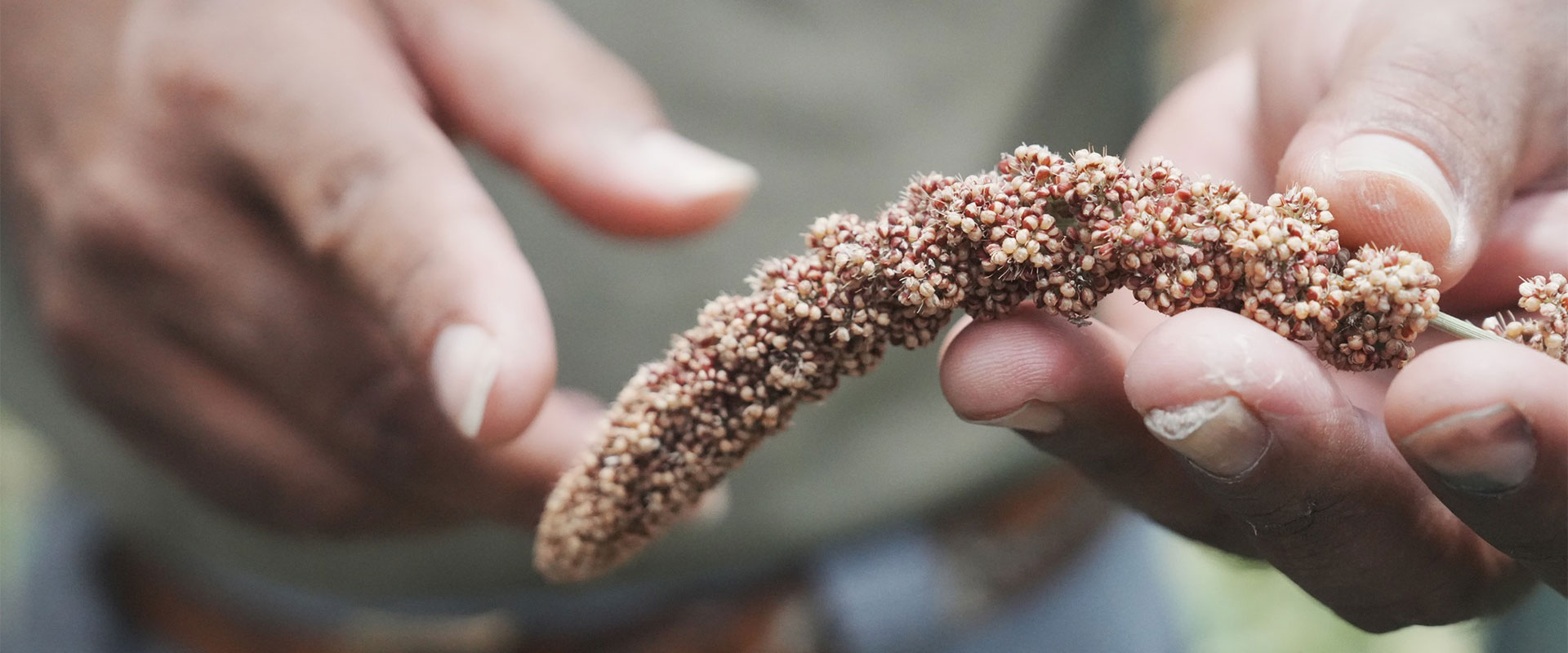
Planting millet is a yearlong cycle.
From choosing the planting site, clearing, sowing, to harvesting—
each stage is accompanied by solemn rituals.
Millet is more than food.
It is the root of our culture.
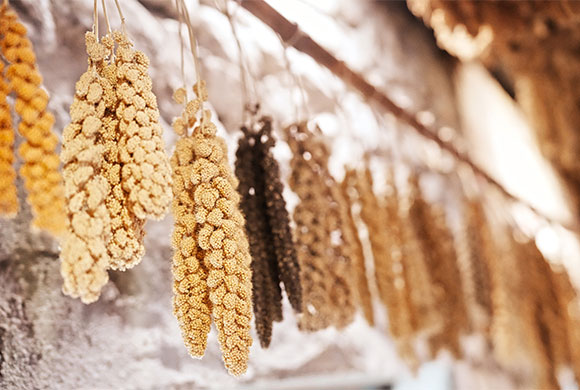 Different varieties of millet are gathered—<br>some are stored for seeds,while others are planted in the fields.
Different varieties of millet are gathered—<br>some are stored for seeds,while others are planted in the fields.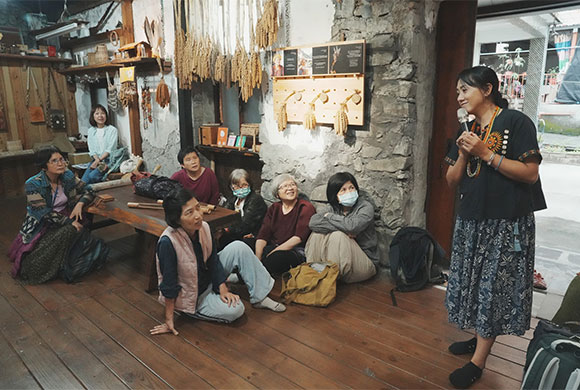 Farmer Hao-ching introduces the forest calendar.
Farmer Hao-ching introduces the forest calendar.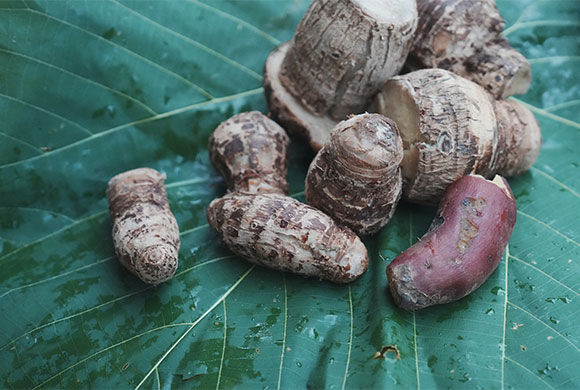 Taro.
Taro. Dried taro.
Dried taro.#Oral History by Dradrivy Qaljecime
The millet journey begins in November, when the soapberry tree (zaqu) drops its fruits.
That is the signal to prepare the fields.
People begin burning, weeding, or turning the soil with machines.
Before planting millet, the Paiwan people hold a land-clearing ritual.
We speak to the ancestral spirits, saying:
“We, your grandchildren, may not do everything perfectly.
Please grant us wisdom so that this land we cultivate may bring a good harvest.”
From December to January, when the black bark crape myrtle blossoms, it’s time to sow the millet.
Here, we use the broadcasting method—scattering seeds freely onto the earth,
allowing each millet seed to find its own place to grow.
In February, as the first spring thunder rolls, the millet begins to sprout.
Then it’s time to plant taro—one crop follows another in a natural relay.
After about 30 to 40 days, the millet grows thick and close together.
This is when we begin thinning the seedlings, so they won’t compete for nutrients.
“Every single one looks so healthy—how can we choose which to pull out?”
“You have to learn to let go, to give each plant enough space to grow,”
my husband Lan Baochang always says.
“Don’t be reluctant. Learn to cut and let go.”
By April, as animals enter their breeding season, millet also grows rapidly.
We step lightly in the fields, avoiding disturbance.
The plants are communicating, connecting, adapting to the land.
This is also the season where men learn to hunt, fish, repair rooftops, and check the mountain streams and women begin pickling, sewing, and preparing winter food.
Elders always take the children along.
Even if the children don’t understand everything yet,
over time they’ll remember—
what their mothers preserved in which season,
how their fathers prepared for the hunt.
It’s not deliberate teaching, but learning through daily life.
And so, knowledge is passed on.
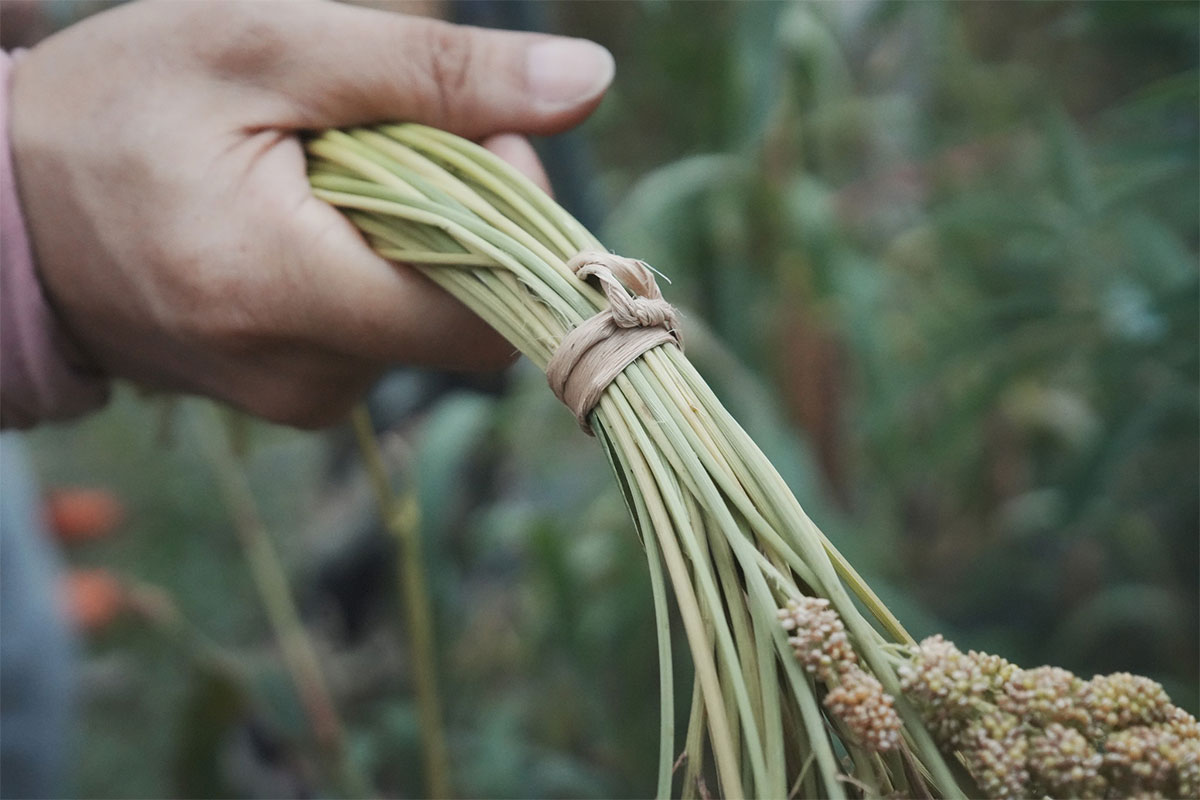 Millet tied into bundles.
Millet tied into bundles.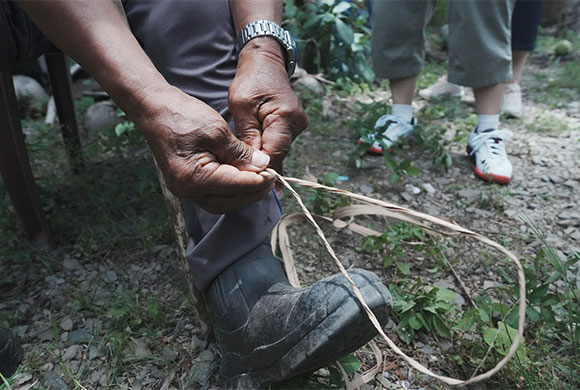 Making tying ropes.
Making tying ropes.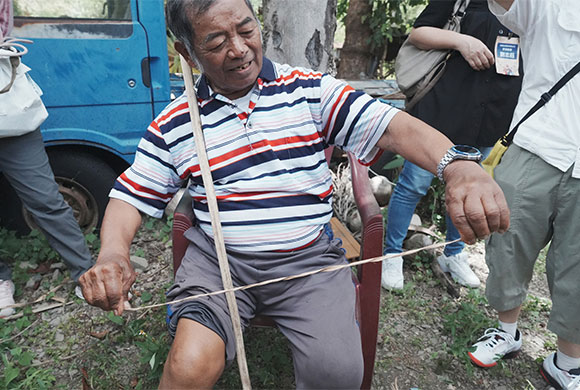 Wrap the fiber once around the foot—<br>and a strong tying rope is done.
Wrap the fiber once around the foot—<br>and a strong tying rope is done.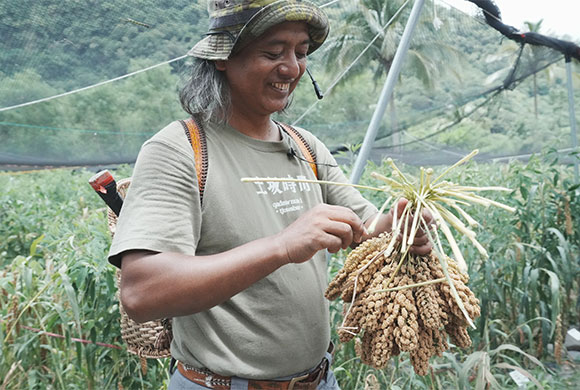 As Farmer Lan Bao harvests millet,he ties the stalks into neat bundles.
As Farmer Lan Bao harvests millet,he ties the stalks into neat bundles.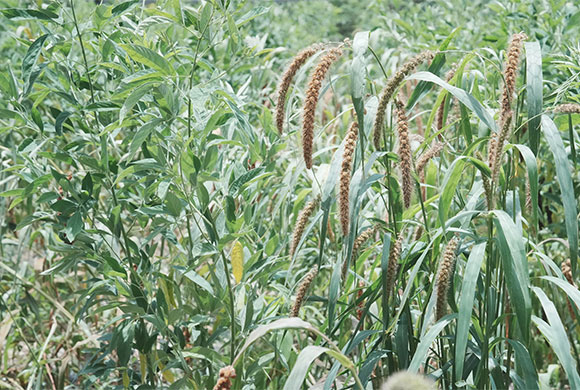 Tree beans are also interplanted among the millet.
Tree beans are also interplanted among the millet.Each tribe, each community, and each family has its own forest indicators.
Why are the forest calendars different from place to place?
Because each landscape is different.
Here in Tutsak, Da-zhu-gao River Basin, our millet life calendar is one of a kind.
We observe our environment carefully.
For example, we can’t use plants with long blooming periods like the orange jasmine—
its flowering lasts too long and can’t serve as a precise indicator.
We usually choose plants with a flowering period of about a month and a half.
The farming rhythm in the forest isn’t measured by clocks.
It flows in the whispers of wind, the falling of fruits, and the blooming of flowers.
Walking into the forest also means stepping into Tutsak’s forest calendar.
This place isn’t a tourist spot—it’s a rhythm.
A beat slower than the city,
but closer to the heartbeat.
Here, everyone can find their own rhythm—
a resonance with the land.

